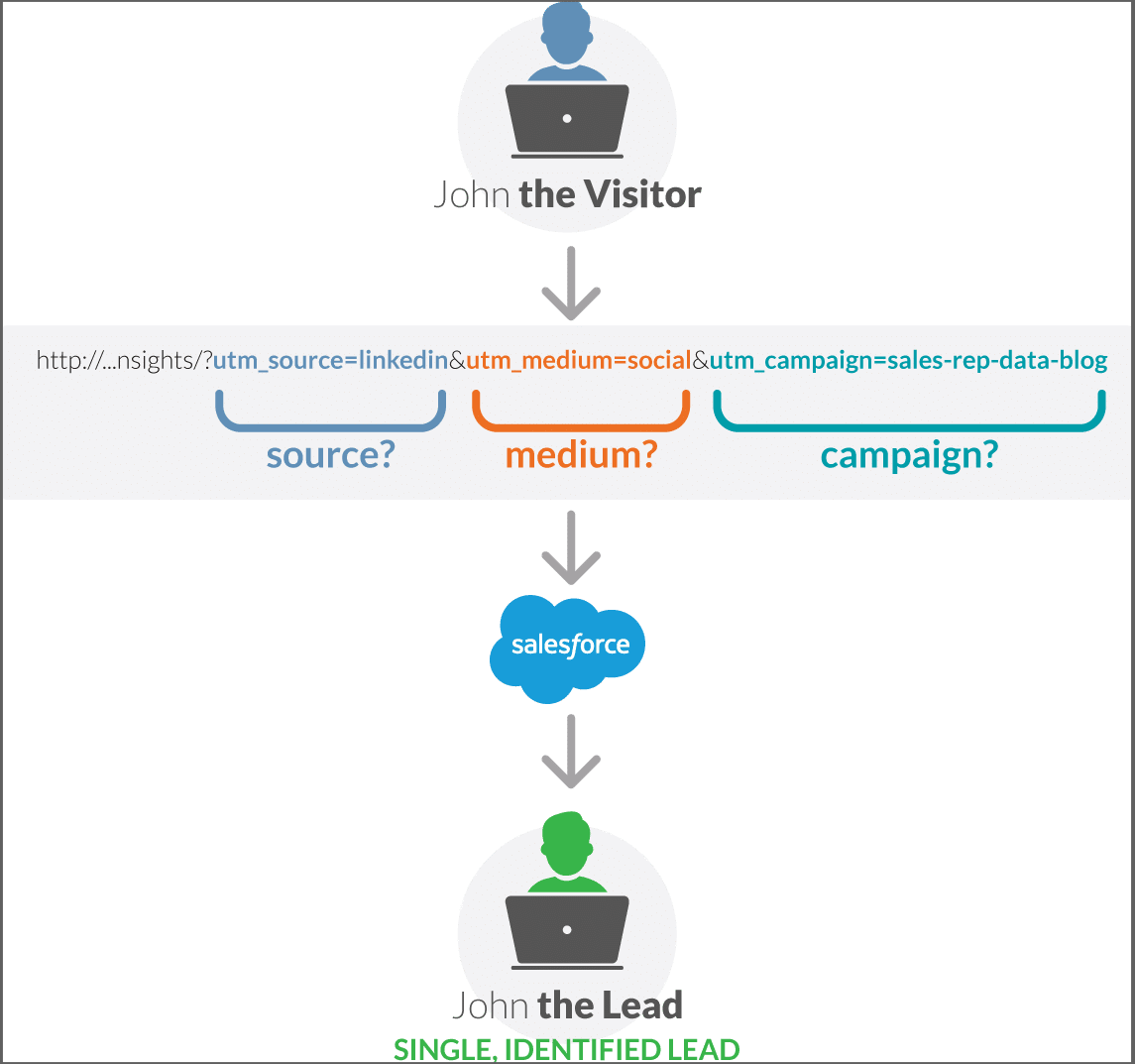 If you are looking to measure the success of your digital campaigns, consider utilizing Digital Source Tracker as an optimal option to the method detailed below. Digital Source Tracker provides tracking of digital touches, organic traffic, and other types of referral traffic that comes to your site, pairing anonymous digital touches with known leads in your CRM – even without UTM parameters. Click here for more information or contact us today.
If you are looking to measure the success of your digital campaigns, consider utilizing Digital Source Tracker as an optimal option to the method detailed below. Digital Source Tracker provides tracking of digital touches, organic traffic, and other types of referral traffic that comes to your site, pairing anonymous digital touches with known leads in your CRM – even without UTM parameters. Click here for more information or contact us today.
In this blog series, we are tackling UTM Parameters including the why and the how of tracking them in Salesforce. Part 1 of this blog series provides a brief overview of UTM parameters and why your organization should be tracking them in Salesforce.
For a PDF of blogs 1-3 in this series, download our “Definitive Guide to Tracking UTM Parameters in Salesforce.”
What are UTM Parameters?
UTM Parameters, otherwise known as Google’s Urchin Tracking Module, allows marketers to track and measure the success of various dimensions of their online marketing campaigns. Let’s say you have a whitepaper on your website that you want to promote via various channels across the web. You’d like to understand not only how much traffic each referral link is bringing to your website, but whether certain channels, mediums, search terms, etc. are resulting in greater revenue for your company. Armed with this knowledge you can more safely invest and predict how much revenue your campaigns can bring in.

UTM Parameters allow marketers to track all this information without having to create separate landing pages for each referral link. By appending information about the specific promotion in the URL that directs to your landing page, you can have a single landing page and track all of the channels driving to that page dynamically. So, what specifically can you track?
utm_source: Used to describe where the traffic is coming from. For example, the name of the website, newsletter name, or social media outlet.
utm_medium: Used to describe the medium of the element or type of source such as cpc, email, banner, social, etc.
utm_campaign: Used to describe the overall campaign you are running. For example, XYZ Whitepaper, 0516-XYZ-Webinar, etc.
utm_term: Used to tag paid keywords. For an ad for “Campaign Attribution,” this might be “campaign-attribution”
utm_content: Used for a/b testing calls to action (CTAs). For example if you have a newsletter with a link to your whitepaper in the footer and the sidebar, you would have “utm_content=footer-link” and “utm_content=sidebar-link” to differentiate between the two links.
Why track UTM Parameters in Salesforce?
If you are familiar with UTM Parameters already, you know that Google Analytics offers very rich reporting on conversion tracking. So, why would you need to also pull this data into Salesforce? The main reason is that the conversions Google Analytics track are related to Goals that you set which are generally whether or not the user gets to the thank-you page after landing on your website and not whether or not that person converts to become a customer (those that have e-commerce websites can more readily track conversions to customer since it’s all done on the website, but those B2B companies with long sales cycles may not be able to track this exclusively using Google Analytics).

The information about customer conversion lives in Salesforce as Opportunity records. You’ll want to tie UTM Parameter information to your Opportunities in Salesforce in order to arrive at the holy grail of marketing analytics, your return on marketing investment (ROMI). Moreover, there’s additional metrics that Google Analytics isn’t capturing that Salesforce does such as those Leads generated from your Campaigns that end up Disqualified due to lack of budget, purchasing from a competitor, junky data, etc. All of these data points are important dimensions you should be tracking in order to make data-driven marketing decisions.
Hungry for more?
Check out blog Part 2 and Part 3 in this series.
The Definitive Guide to Tracking UTM Parameters in Salesforce
Download this guide to get all of the best practices for measuring the success of your marketing campaigns using UTM parameters inside Salesforce.




